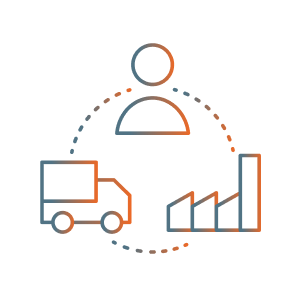Use data to alleviate sourcing pressure
To say that today’s market is challenging is an understatement. Modern supply chains must work around many hurdles, including fluctuating tariffs, increasing regulations, shortened product life cycles, ongoing labor shortages, and extreme volatility in market demands.
These are all in addition to the “no norm is the new norm” supply chain surprises of the past few years, from pandemic-related pressures to weeks-long port backups to cargo ships running aground.
But even amid the struggles, the expectations placed on supply chain executives remain high. Companies are looking to you to create and maintain sourcing systems that withstand current headwinds while also:
![]()
Improving environmental, social, and governance (ESG) scores

Maintaining reliability and brand reputation

Mitigating costs and finding increased efficiencies

Increasing supply chain elasticity
Given these additional performance metrics, the days of sourcing based primarily on cost are long gone. SCM teams, instead, must evaluate their sourcing on an increasingly complex set of supplier variables, including scalability, resiliency, quality, and flexibility — to name just a few.
Understanding these factors requires additional data and metrics. It also requires new systems that can collect the data and provide analysis in near real-time to generate executable information. For companies that want to remain competitive amid the volatility, data-driven sourcing decisions are the differentiator.